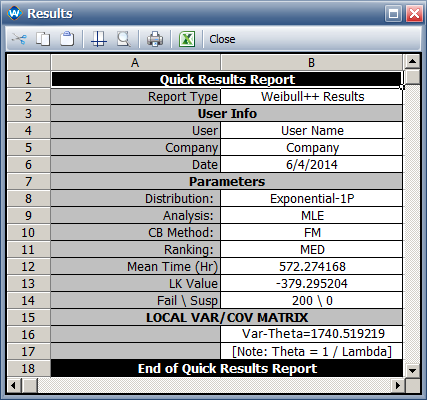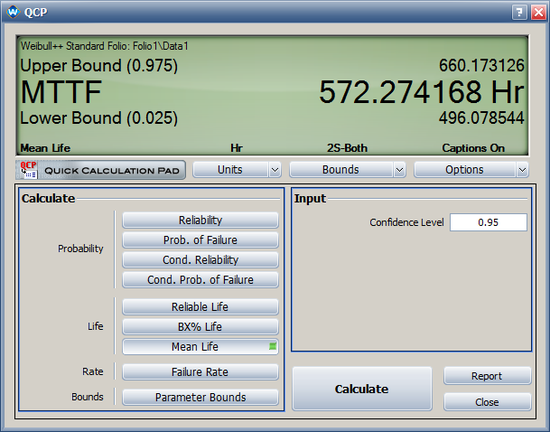1P-Exponential MLE Solution for Interval Data: Difference between revisions
Jump to navigation
Jump to search
Kate Racaza (talk | contribs) No edit summary |
Kate Racaza (talk | contribs) No edit summary |
||
| (2 intermediate revisions by the same user not shown) | |||
| Line 1: | Line 1: | ||
{{Reference Example}} | {{Reference Example}} | ||
This example validates the calculations for the MLE solution, likelihood ratio bound and Fisher Matrix bound for a 1-parameter exponential distribution with interval data in Weibull++ standard folios. | |||
{{Reference_Example_Heading1}} | {{Reference_Example_Heading1}} | ||
| Line 33: | Line 33: | ||
{{Reference_Example_Heading3}} | {{Reference_Example_Heading3}} | ||
The cumulative distribution function for an exponential distribution is: | The cumulative distribution function for an exponential distribution is: | ||
Latest revision as of 16:16, 28 September 2015
New format available! This reference is now available in a new format that offers faster page load, improved display for calculations and images and more targeted search.
As of January 2024, this Reliawiki page will not continue to be updated. Please update all links and bookmarks to the latest references at Weibull examples and Weibull reference examples.



